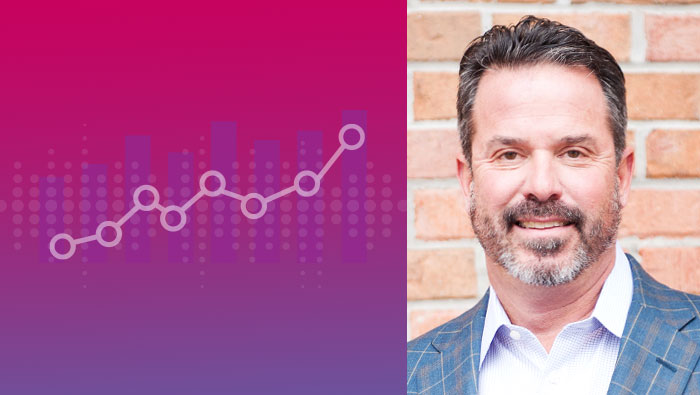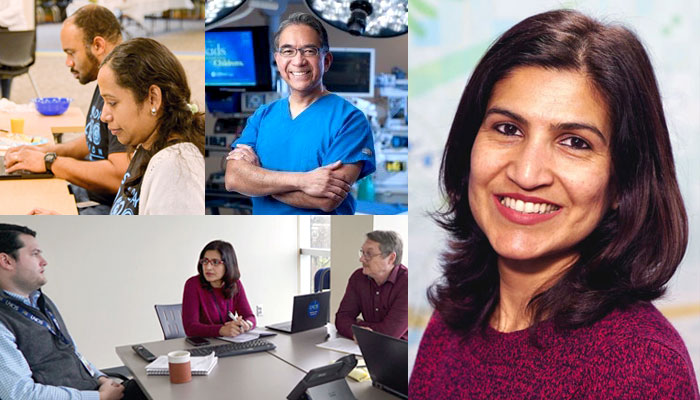Baltimore-based The Living Legacy Foundation—whose donation service area spans from Maryland’s rural western region to the remote areas of the Eastern Shore—is one of the OPOs that increased its average number of recoveries during the first few months of the pandemic. In a recent interview, CEO Charlie Alexander discussed how The LLF team achieved this and why he sees the pandemic as an opportunity for creative change that can lead to permanent improvement, and ultimately making more organs available for the patients who need them.
A core value of The LLF is creative thinking. How has this helped you continue to serve donor families and patients during the pandemic?
I try to see this crisis as an opportunity for creative change. When you have to create a new work process, as we did when the shutdown took effect, it provides an opportunity to decide what we need to get back to as soon as we can, as well as determine what things can be done more efficiently and what things we can leave behind completely. This can mean looking at ways to do business in ways that that don’t require being in an office, and exploring other ways to become more efficient and eliminate waste.
What creative changes and innovations will you carry forward beyond COVID-19?
With social distancing impacting everyone’s lives, we are having to lean into our creative thinking in terms of reaching people and staying connected during this time.
Meeting communities where they are can be challenging even when it’s not a pandemic. We have some tough to reach neighborhoods in Baltimore in terms of sharing the importance of organ donation and transplant. But then again, everyone who has a phone or a laptop is used to either livestreaming content about what’s happening in their life, or seeing what others are doing.
Right now so many community groups and support groups are still continuing to do their important work via Zoom or FaceTime—it’s the new normal, and we can be a part of that.
There are actually a number of areas where we can improve and become more efficient by leveraging the videoconferencing technology that’s become so accepted in the past four months.
Pre-pandemic, a hospital services coordinator would get in a car, drive three hours to do a five-minute presentation at a new nursing orientation at a remote hospital, and then they’d hop in the car and come home. Now that person can wake up in the morning, get work done, log onto a Zoom orientation for 10 minutes, and then be productive during the time they would have been in a car. There’s going to be a lot more use of this kind of technology that will let us become more efficient.
How has this new kind of communication benefited you and your transplant partners?
I feel like the new communication norms have helped us build relationships, because it’s actually allowing us to communicate more effectively.In the old days, my assistant would schedule a meeting with a transplant administrator’s assistant, or vice versa, and then we would meet in person. While it was great, it wasn’t always the most efficient use of our time. Today we use Microsoft Teams or Zoom, and can meet quickly and with less scheduling challenges. Things are happening faster and more efficiently.
I started filming biweekly five-minute updates for our transplant partners and we put them on YouTube. Doing that allowed me to send them a link and say, “Watch it whenever you are able.” Then I could tell them that we were bringing our own PPEs and would do remote online workups. I could be clear that we were still going to be there to support the family, and for authorization discussions, but also reassure our transplant partners that we were going to keep our staff out of their hospitals until we are absolutely needed.
We wanted to minimize our in-and-out in order to keep the hospital staff safe. Those videos really gave me a venue with the senior leadership of these hospitals that was not burdensome for them.
Your OPO saw an increase in its average number of donors and transplants during this time—what factored into that?
Yes, we had more donors and transplants on average from March through May than we did before the shutdown. We think we were one of the first OPOs in the country to have stat testing. From almost day one of our shutdown, we had an arrangement through Hopkins where we were getting results in 8-10 hours. Other parts of the country had slower testing that could take several days. But we were able to have results back before we were finished doing our workup on the donor, which meant we could go into the OR sooner.
At the very beginning some of our local transplant partners were pulling back from transplants because they were worried, so we were placing organs with outside hospitals that either hadn’t been impacted yet, or already had a process in place. We wanted those organs transplanted.
Those outside hospitals were asking our local surgeons to help recover for them, which was reasonable. This led to our local programs quickly shifting back into actively transplanting.
So we saw a decrease in kidney utilization for a bit, and we saw almost a complete stop to DCD for about a month, but otherwise we kept on our normal track. About 80 percent of our recoveries and placements were not affected, meaning only about 20 percent were impacted. And now, I would say we’re back to normal, including DCD recoveries.
Other countries saw their rate of recoveries and transplantation drop dramatically during the pandemic, but this was not the case in the U.S. To what do you attribute this difference?
The U.S. has one of the few independent organ recovery organization systems in the world. We would not have had the ability to focus on organ donation in this country if we weren’t independent. I think that’s a big part of why we’ve succeeded.
Most OPOs, or most organ donation processes in other parts of the world, are hospital-based, and that is a significant difference. When hospitals are dealing with a pandemic, the things on the periphery get pushed to the side so they can focus on and put all their resources into their living patients.
In our country, OPOs’ entire job is to make sure organs are available for waiting recipients. We are not distracted by the need to provide care for COVID-19 positive patients like hospitals are. I think as the crisis escalated, donation and transplantation became less of a priority in other countries, and their systems really came to a grinding halt. If OPOs in the U.S. were not independent, that would have happened here as well.
So that is part of what we talked about in the very beginning of this. I’m talking to my hospital partners saying, “You do what you have to do, and we’re going to do our thing over here. Don’t worry about it, we have it covered.”
There is a lot of opportunity for OPOs to improve in this country, but at the same time there’s also a lot of good stuff happening with OPOs. When smart people are faced with a challenge, they figure it out. And I think that’s part of what happened here.
Charlie Alexander has been active in the field of transplantation since 1996. A registered nurse with experience in critical care and trauma, he began his career at The Living Legacy Foundation in 1996 as an operating room perfusionist. After launching the hospital development department for The LLF, and later managing hospital services, Alexander became the director of clinical and hospital services. He has been the organization’s president and CEO since 2004.
A former past president of the OPTN, Alexander has been elected twice to the OPTN Board of Directors. A past chair of both the OPTN Organ Procurement Organization Committee and the Membership and Professional Standards Committee, he also served as the first chair of the OPTN Data Advisory Committee, which was organized in 2015 to create a strategic vision for data management and utilization for the field. Alexander has served as board member for a range of transplant-related organizations including NATCO and the Organ Donation and Transplantation Alliance.



